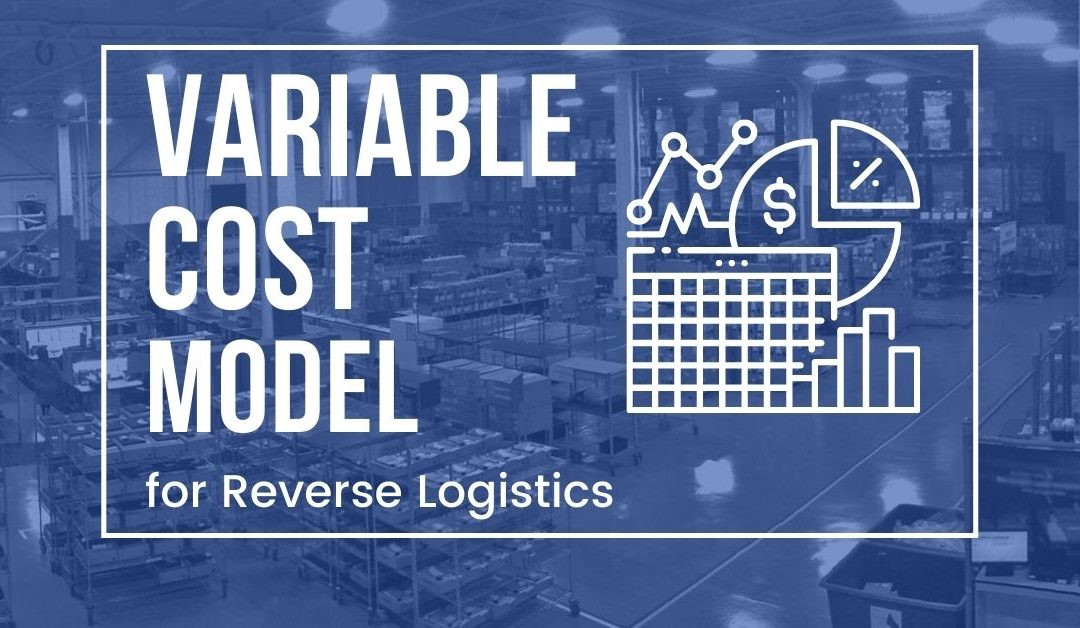
by Mark Palumbo
Director of Business Development, PanurgyOEM
A proven way to control expenses, maintain repair quality for your customers and improve your reputation, is to implement a variable cost model into your supply chain.
Everybody loves forward logistics
So much focus is invested in the forward logistics lifecycle, from the factory to the distributor, the retailer finally to the customer. It has to run like a well-oiled machine in order to understand and predict revenues, profits, etc.…
There are volumes written about and degrees offered in this type of logistics as its success is essential to a company’s life blood as efficient processes in the forward supply chain can be directly associated with profit margin.
Precision is key in forward logistics.
The flip side of that coin is reverse logistics, your customer changes their mind (you don’t know why), and they can’t figure out a feature/function, the product doesn’t work out of the box, they get buyer’s remorse.
Reverse logistics – can’t get no respect
At that point your product enters your company’s Reverse Logistics Lifecycle and usually that’s a whole different ball game.
The reverse lifecycle doesn’t get the same degree of focus,
- It’s often not considered to be critical to the bottom line
- It’s not as visible to senior management
- It’s often “somebody else’s problem”
Why Reverse logistics must be taken seriously
Given the fact that up to 20% of electronics purchased are returned – and that 20% enters the reverse lifecycle, we’re talking about a pretty significant chunk of your revenue. It has been estimated that supply chain costs associated with reverse logistics average between 7 to 10 percent of cost of goods.
Companies can no longer afford to treat reverse logistics management as an afterthought. It needs to be a core capability within the supply chain organization.
That has changed as companies increasingly realize that understanding and properly managing their reverse logistics programs can not only reduce costs, but also increase revenues. It can also make a huge difference in retaining consumer loyalty and protecting the brand.
To DIY or not DIY, that is the question
The implementation and ongoing management of a fully functional Returns Lifecycle program can be both expensive and labor intensive.
“Do It Yourself” reverse logistics can be a risky venture because it’s not your primary mission. Your main focus is design, manufacturing, marketing & sales.
An in-house repair program requires significant investment in factory space, warehousing, parts inventory, training, management and staff.
Hiring, training and keeping a full time repair staff can be tricky for a couple of reasons but the main reason is… elasticity.
By ‘elasticity’ we mean the ability to quickly add trained staff when demand is high and not permanently lose that same trained staff during the months when demand takes a dip. Bringing new staff in, training them and getting them up to speed to handle a surge in repairs can add weeks to your customer’s turnaround time.
How Budgeting correctly can impact your bottom line
The Reverse Logistics Cost Equation is an assembly of the 4 key cost components or categories related to the creation, handling, processing and final disposition of a return item. The equation is as follows:
The Reverse Logistics Cost Equation:
Processing/Handling Costs + Logistics Costs + Credits/Replacements Cost + Asset Depreciation = Total Reverse Logistics Costs
It is important to note that any reduction in one of these Reverse Logistics Cost Equation components goes straight to your bottom line profit.
Small improvements to processing often result in some financial savings that increases corporate profits. For instance, it may cost you $50/unit to process a warranty return. If you are able to improve the process and save 10% of your processing costs, you will send $5/unit to your bottom line profitability.
The case for an Outsourced Variable Cost Model
In many cases, the best option is to outsource your reverse lifecycle process to an experienced and professional company who is focused on processing returns, handling repairs and seeing that your customers are cared for in a speedy and courteous manner.
Outsourcing your reverse logistics program saves you money, improves your overall customer satisfaction and enables manufacturers to focus on what they do best – Design, Manufacture, Market and Sell.
1. Staff
- Cost: A returns partner will allow you to eliminate F/T repair staff (and management) payroll and overhead expenses or enable you to redeploy that staff to other, more essential projects.
- Elasticity: The ‘right’ partner will have cross trained staff at the ready should demand surge and with a variable cost model, should demand plummet for a month or two, you won’t be spending on staff with little to do.
2. Process
- Training: Your partner will handle all training tasks for new employees and new products
- With committed turnaround times for repairs, your customers won’t have to endure delays due to a new employee’s ramp up window.
- The management layer will be greatly simplified working with a qualified partner.
- Software, management computer systems that allow customers to understand where their product is in the repair cycle, will be the responsibility of the partner
3. Assets
Real Estate:
- Factory
- Warehouse
- Parts room
Capital expenses:
- Workstations
- Racks
- Test gear
- Tools
- Pallet management
- Forklifts
- Safety equipment
As costs decrease, customer loyalty increases
With a partner solely focused on your reverse logistics process, customer loyalty and overall reputation has the opportunity to improve:
Defined and committed turnaround times for repairs and a software portal tracking items throughout the repair lifecycle gives your customers a definite expectation for return of their repairs. This also gives the assurance that they made a good purchasing decision and your company will be viewed as a solid company when they look to make new purchases.
Conclusion:
Outsourcing allows you to
- Hedge your bets against an uncertain business future
- Understand your expense profile for the Reverse Logistics lifecycle
- Avoid capital expenditures
- Opportunity to improve customer satisfaction and loyalty
About PanurgyOEM
It’s essential to go with a reverse logistics vendor who is an expert in quality repair and turnaround time and who can get your program operational quickly.
PanurgyOEM has been delivering high quality reverse logistics services for electronics manufacturers for nearly 40 years.
Based in northern New Jersey, situated in an ISO 9001-2008 compliant 90,000 square foot facility, PanurgyOEM is located just off Interstate route 80, near 3 major airports and 35 miles from Times Square in NYC.
Equipped with loading docks, flexible warehouse space and repair & refurbishment workstations to accommodate most assignments, PanurgyOEM is able to perform repair, assembly, refurbishment and last mile manufacturing services for our clients with fixed priced agreements and prompt, guaranteed turnaround times.
For more information or to schedule a tour of our facility, please contact us at 973-625-4056 or ma**********@pa********.com.

